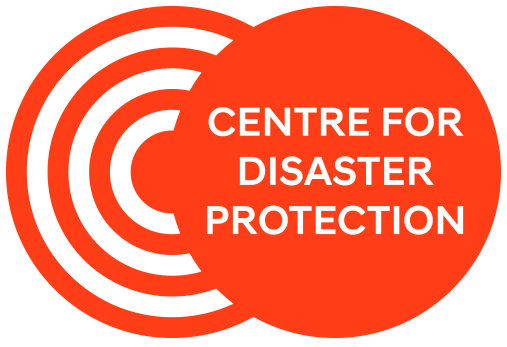
BLOGS
Unveiling the state of pre-arranged financing for crises
The Centre for Disaster Protection is on a mission to prevent disasters from devastating lives by ensuring that countries are better prepared for crises. To protect people from the devastating impacts of disasters pre-arranged financing should be the primary way to pay for crisis response so that funding gets where it is needed faster, with greater impact.
But how much pre-arranged financing is there, and where does it go?
Remembering Jonathon Gascoigne
We are mourning the loss of our dear colleague, Jon Gascoigne.
Salve for the shock: a case for leadership on debt pause clauses
As the World Bank welcomes its newly appointed leader, Ajay Banga, this post explores the practical and philosophical considerations associated with multilateral lenders taking the lead in implementing pause clauses.
A world in crisis: who foots the bill?
The Centre for Disaster Protection partnered with Tortoise Media to host a thought-provoking online on the pressing issues of accelerating debt, climate change, and disaster risk, while questioning the suitability of 20th Century institutions in addressing the challenges of the 21st Century.
Every day counts: evaluating the benefits of early action during a crisis
Typically, help in response to a humanitarian crisis comes after the fact and is requested through formal appeals. This type of response can be delayed, influenced by political factors, and often inadequate. UNOCHA and partners piloted a large-scale collective anticipatory humanitarian response to flooding in Bangladesh in 2020. In this insight, Lydia Poole, Associate Director for Evidence, shares her thoughts on what the evaluation of the intervention could mean for a system-level shift towards anticipatory response.
Growing interest: Taking debt pause clauses to scale for resilience and recovery
Our new Insight Paper examines an innovation in sovereign debt contracts that may be groundbreaking in its potential impact on public finances and lives of citizens in disaster- and climate vulnerable countries – a debt pause clause.
Better is possible: How the World Bank can rise to meet climate and crisis risk
In August 2022, extreme monsoon rains exacerbated by glacial melt runoff, resulted in catastrophic floods in Pakistan. The damage was on an unprecedented scale, with flood waters inundating tens of thousands of square kilometres. Pakistan sought substantial support from the international community for assistance with the immediate humanitarian response, as well as recovery and reconstruction efforts estimated in the billions of dollars.
The Chile cat bond – taking the temperature
The Republic of Chile has just purchased its second World Bank intermediated catastrophe bond. This is the first real test of World Bank-intermediated cat bonds in what is currently an expensive market for buyers. As well as adding earthquake protection for Chile’s public finances, this transaction offers useful insights for other countries looking to purchase capital markets risk transfer.
In this insight, Lead Risk Finance Adviser Conor Meenan explores why countries might choose to buy risk transfer even when costs are high and discusses aspects of the bond that affect its final price.
Trade-offs in times of crisis: assessing the impact of budget reallocation
When disasters strike, governments are often forced to raid their existing budgets and make difficult trade-offs to finance emergency relief and recovery.
Our new research, conducted with Oxford Policy Management, looks into the evidence on the cost and benefits of budget reallocations and tests a new methodology for quantifying their impact.
Applying lessons from gender-integrated social protection to disaster risk finance
There is growing operational convergence between disaster risk finance and social protection, notably cash transfer programmes. But where does gender fit into these discussions and what can disaster risk finance learn from the large body of experience and evidence that exists within the field of social protection? Can understanding the gendered impacts of different risks on different people in diverse contexts determine what – and who – is or isn't protected after a disaster? How does this understanding feed into the design of instruments, such as risk pools or insurance?
The next pandemic: if we can’t respond, we’re not prepared
Amidst the disastrous impacts of the COVID-19 pandemic, international policy attention on global pandemic prevention, preparedness and response (PPR) has been laudable but has so far proved inadequate. The chance of another deadly pandemic is significant and the potential toll catastrophic, but the current level of global investment in PPR does not yet provide the kind of protection the world needs for effective response.
Divided by a common language – seven questions and eight answers about disaster risk reduction, finance and climate change adaptation
As part of a series of conversations tackling the sticky questions around disaster risk and climate change finance, Centre experts Chris Kiggell and Jon Gascoigne have sought to address key questions around climate change-induced losses and damages, and the role of disaster risk finance in tackling them. Following the first blog, they are now turning to definitional questions around disaster risk reduction, disaster risk finance and climate change adaptation.
The nine trillion-dollar idea you (probably) didn’t catch at COP
With the hoopla of COP, you would be forgiven for missing a modestly-attended panel discussion on The Case for Climate Resilient Debt Clauses, a superficially simple idea that nonetheless could help pivot hundreds of billions of dollars towards tackling disaster risk.
Launching our support for adaptive social protection in the Sahel
The Sahel stretches nearly 4,000 kilometres in an arc that straddles the width of Africa, separating the relatively more tropical African countries to the south and the arid desert to
the north.
The Sahel G5 group of countries- Burkina Faso, Chad, Mali, Mauritania, and Niger- are increasingly poised between promises of stability and growth and the mounting sources of stress and uncertainty that could mire the region’s progress.
Uneasy bedfellows? The role of Disaster Risk Finance in tackling climate-induced losses and damages
LONG READ
A new evidence review from the Centre for Disaster Protection and ODI introduces the key issues around climate change-induced losses and damages and the role that DRF mechanisms could play in tackling them. But it’s a subject fraught with sensitivities. Jon Gascoigne and Chris Kiggell step into the definitional minefield to unpack some of the opportunities, limitations, and bones of contention.
Prime time for the pause clause? Making climate resilient debt work
Pakistan is in trouble. Heavy monsoon rains have flooded an area the size of the UK. The country’s National Disaster Management Agency estimates that 33 million people are affected. The country’s ‘breadbasket’ is soaking wet. Nearly half the arable land in Sindh, South Punjab, and Baluchistan has been damaged. And with agriculture accounting for $2.3 in every $10 of the country’s GDP, the knock-on effects are terrible, particularly for poor people. The floods will cost both lives and livelihoods.
Five lessons on collective approaches to anticipatory action
Between spring 2020 and early 2022, the Centre supported OCHA in undertaking process learning on four anticipatory action (AA) pilots in Somalia, Bangladesh, Ethiopia, and Malawi. The pilots are part of OCHA’s aspiration to facilitate a broader shift in the humanitarian system to address disasters in a timelier, more dignified and more efficient way, by mitigating the impact of impending crises on the most vulnerable. Collective approaches to AA are still an innovative space. It was therefore important from the outset to intentionally learn from the pilots, building evidence that could support continuous improvement and help facilitate this shift.
Humanitarian Insurance: Weighing the Options
Through the previous blogs in this series, we have started to unpick the role for risk transfer in a humanitarian context, and raised some of the ethical, practical, and principle-based reasons why humanitarian actors might think twice before using risk transfer tools like insurance . The obvious next question for humanitarian actors and donors is simple: "when is risk transfer a good option?".
Humanitarian Insurance: Ethical tightropes, trade-offs and unintended consequences
Insurance can be a useful tool for managing the unpredictable costs of disasters. But humanitarians have a number of particularities linked to their principled approach, their funding and operating models that require them to give serious consideration to not only whether the cost of premiums justifies the operational benefit – but whether it is ethically and practically, the right thing to do. In this blog, we outline some of these dilemmas and expand the list of questions humanitarians ought to consider beyond ‘could you?’s to a considerable list of ‘should you?’s.
Risky business: Three exam questions from the Risk Pool Summit
The Centre for Disaster Protection works on how the global crisis financing system can better protect people when disasters strike. With years of experimentation and iteration behind them, risk pools are an essential piece of the answer, offering predictable pay-outs for pre-agreed risks like earthquake and drought. Last month, the Centre hosted the executive leadership and technical experts for a Risk Pool Summit for two days of knowledge sharing, strategic alignment, and collaboration.




















